Leaving Kavala and on to Xanthi
This morning I will be heading off to Xanthi. My bag is packed and my bus ticket has been purchased – all good to go. As I fling open the curtains to my room I’m taken aback by the sight below me – I’d completely forgotten that today is Saturday – and that means market day! Boy the double glazing on this window is good. I didn’t hear them arrive and set up. It’s 07:30 and the place is already bustling with activity. Although I love a market full of fresh produce like this but unfortunately I don’t have time for a mooch. Instead, I head downstair to breakfast and say hello to the resident seagull who’s routinely prowling the terrace for scavenging opportunities.
After checking out I mosey on over to the bus station and just as I reach it I hear a cheery “Hey there!” It is Gary, the Canadian guy that I’d met at Philippi. Gary will be staying in Kavala for a little longer. He tells me that he will be taking up my recommendation to visit Chios before continuing his travels outside of Greece. We exchange contact details and agree to stay in touch.
I’m rather impressed with the bus station in Kavala. Everything seems well organised with information boards for reference and helpful staff at the ticket desk. The bus arrives on time and once luggage is loaded and passengers boarded we head East out of the city towards Xanthi following the old trade route of Via Egnatia.
Xanthi borders Bulgaria to the North and is part of the regional unit of Macedonia and Western Thrace. It sits below the Rodopi mountain range and above the Nestos National Park. Xanthi has an interesting history. The region had been populated since Neolithic times. Small settlements developed but were subject to civil wars, natural disasters and a host of various conflicts that brought about its demise. However, being located along Via Egnatia, the region also accrued significant wealth.
In the mid-fourteenth century, the Ottoman Empire staked its claim on the region along with other parts of Greece. Western Thrace had no population to speak of at the time so settlers were brought from Asia Minor to re-populate. Xanthi itself mainly remained a Greek Christian community and the settlers from Asia Minor formed new communities close by in neighbouring Genesia for example. Genesia became the administrative and commercial centre for the region.
From the 17th Century, the tobacco industry began to thrive in this region particularly in the towns of Xanthi and Genesia As mentioned in earlier posts, the soil and the climate offered perfect growing conditions for tobacco cultivation. In the 18th Century, both towns were subject to devastating earthquakes which practically levelled to the ground. Xanthi was quickly rebuilt. Decades later Genesia was burned to the ground in a catastrophic fire which led to all administrative and commercial centres being transferred to Xanthi.
The region was then subject to an epic game of ‘pass the parcel’ for the next few decades. After the Macedonian and Thracian War in 1912, the region was conquered by the Bulgarians and in 1913 it was liberated by the Greeks. In 1913 after the Convention of Bucharest it is given back to Bulgarians. At the end of WWI it was again liberated by the Greeks and during WW2 it was captured by the Germans who gave it to the Bulgarians. In 1944 it was finally liberated and the following year it officially became part of the Greek state. Another point to remember is that Western Thrace was one of the few regions exempt from the 1922 population exchange. This region has one of the largest Muslim populations in Greece, a place where two interesting cultures collide and fuse together.
Although Xanthi still has a tobacco industry, other industries such as sugar, flour and textiles are the mainstay of employment in the region. It has also deposits of precious stones and Uranium. The Swiss mattress company Cocomat also have a factory here.
On the approach to Xanthi, I catch glimpses of some of the factories through the bus window. Set amongst olive groves and wide expanses of agricultural land, tall silos and industrial buildings dot the landscape.
The journey from Kavala to Xanthi is just one hour. The bus station is located in a modern city made up of tower blocks and the odd tobacco factory. My first impressions are not of an attractive town but I know that its charms lay elsewhere. When looking at accommodation options, I had to put a lot of consideration into choosing the best location. After studying Google Maps I could see that the bus station was located in the more commercial part of the town. The touristic parts of the town are about a thirty-minute walk away. In the end, I opted for an Airbnb just on the outskirts of the town square and about a ten-minute walk to the Old Town.
After retrieving my luggage from the bus I catch a taxi from a rank just outside the station. A thirty-minute walk is a five-minute car ride and he drops me at the corner of Odos Micras Asias. After fathoming the contactless drop key instructions I gain access through the entrance to a block of flats and make my way up to the second floor. I’m surprised when I see that the door is wide open. I call “Hello” and a lady appears in the hallway with a mop in her hand. Chara introduces herself and tells me that she cleans the apartment on behalf of the owner Dimitris. She shows me around the huge apartment and also gives me directions to the old town.
There are three bedrooms and a large open-plan kitchen diner and living space. Outside a large terrace wraps around three sides of the building. The thing that I’m most excited about is the washing machine. Although I’m quite happy to do my washing by hand as I go along, being able to wash clothes in a machine is a real luxury for a budget traveller.
Before leaving, Chara leaves me her mobile number in case I need anything. I’ll be here for four nights and I’m already conscious that I’ll run out of time very quickly. With that in mind, I throw my luggage into one of the bedrooms and head out.
The town square is just a five-minute walk from the apartment. I pass the very impressive Cathedral of St Sophia the Wisdom of God. A walkway leads me into Platia Dimokratias, a large square surrounded by shops, shaded cafes and the town hall. Sitting in the heart of the square is the clock tower. I’ve read several conflicting accounts of its history. The first account says that it was built originally as a clock tower and part of the Market Mosque complex. Another website tells me that it was constructed out of the remains of the minaret from the Market Mosque. Anyway, it seems that it has been a landmark in the square since 1870. It has been the source of contention, especially in 1972 when the Municipality announced plans for its demolition to make way for new developments. The Muslim community objected strongly and here it still stands proudly today.
I forgot to mention that in 1973 the Democritus University of Thrace was established in neighbouring Komitini and a large campus is located here in Xanthi. As I head towards the Old Town along a cobbled street just off the square, I immediately get the sense that this is a university town. On this busy Saturday afternoon, the Old Town is awash with lively cafe bars and packed with young people. Tourists are in the minority here – but it is great to see everywhere so vibrant.
Although I’m tempted to hurl myself into the cafe bar culture, something is urging me to continue on and explore the streets beyond the lively hub. As with most old towns, the cobbled streets diverge in all directions. I pick a street and follow it in an upward direction taking me through near-deserted streets which enable me to truly appreciate the gorgeous architecture.
It’s amazing that just a few steps away from the rather ordinary-looking modern metropolis, I’m instantly transported into this atmospheric Ottoman-era town. At almost every turn I stumble across a brightly coloured neo-classical mansion house, adorned with ornate metal work at the windows and almost always with a grand entrance. The thing that catches my eye though is the abundance of sachnisi, an enclosed projected window that’s a typical architectural feature in the Balkans and Middle East. The textures and patina on every surface sing to me.
The cobbled streets take me high above the hub of the village and the further I climb, the more deserted the streets become. I am stopped in my tracks by the sound of the call to prayer which always has a stirring effect on me – peculiar for an atheist. A little further along poking up between two houses, I can see a tall, white minaret gleaming in the sun. Behind it, the pine-clad hills stretch up and beyond my eyeline. Looking back over the pan-tiled rooves, towards the modern town of Xanthi, I can see the cluster of deeply packed tower blocks sprawling out towards the coast. The old town although part of this metropolis, seems so very far removed from it, as if encased in a bubble that has been suspended time.
The top of the old town cuts off with a main arterial road which also demarks the beginning of a pine forest that covers the mountain behind.
Now I have an idea of the lay of the land, or at least of the old town, it is time to grab a bit to eat, go back to the apartment, unpack and make some use of that washing machine! More explorations tomorrow.



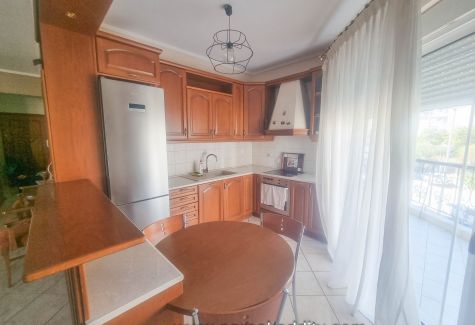
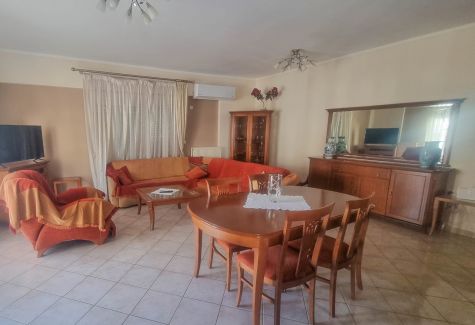
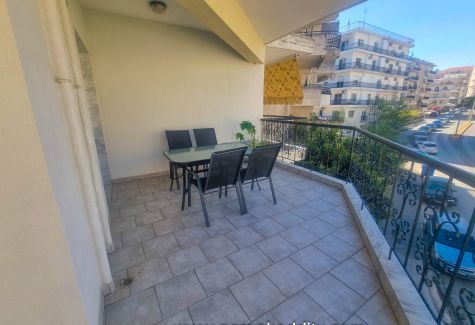
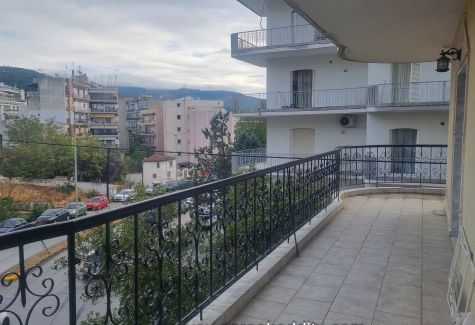
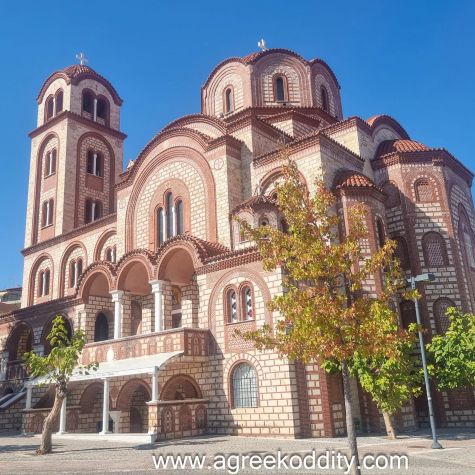
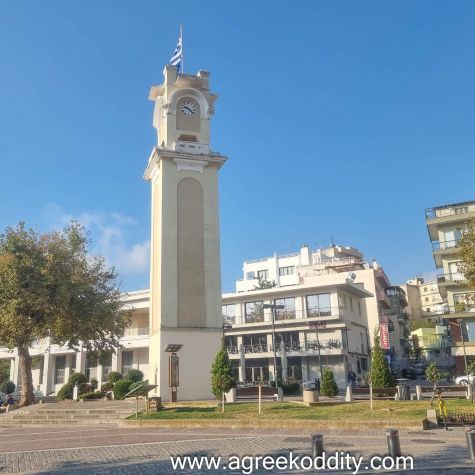
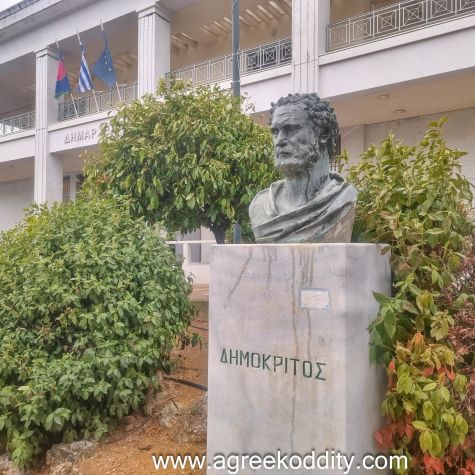
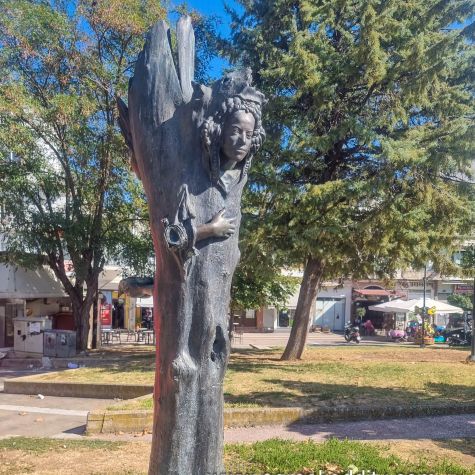
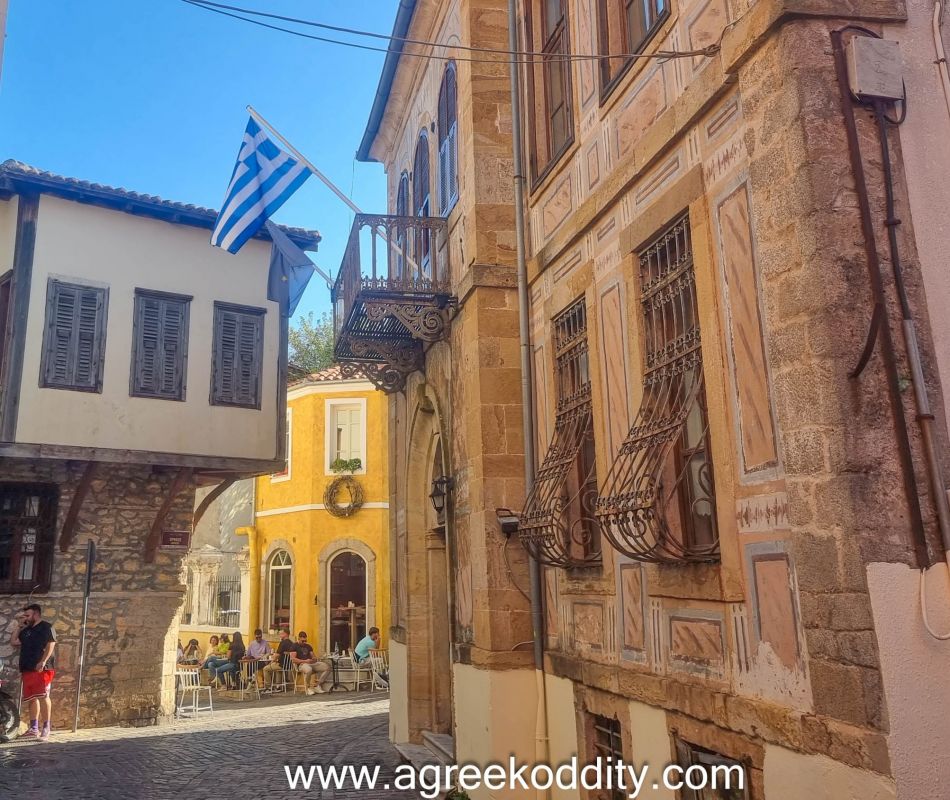
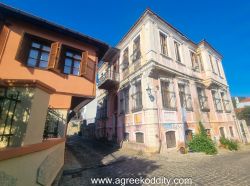
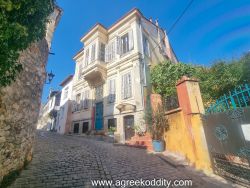
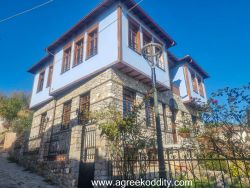

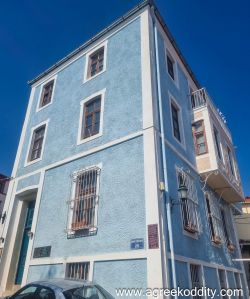
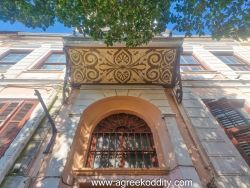

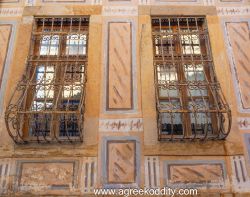


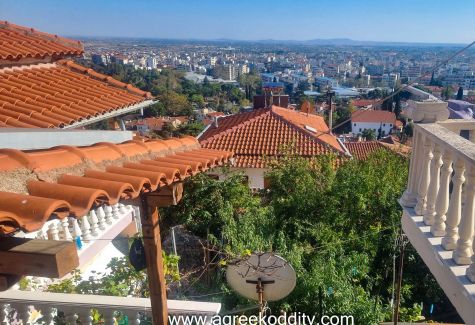






Very interesting Stephanie – good to read about parts of Greece I’m not really aware of.
Thank you Liz!